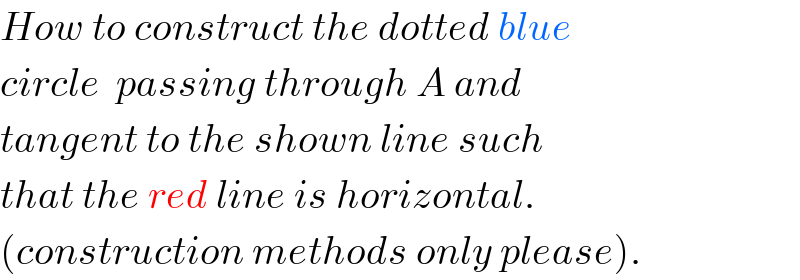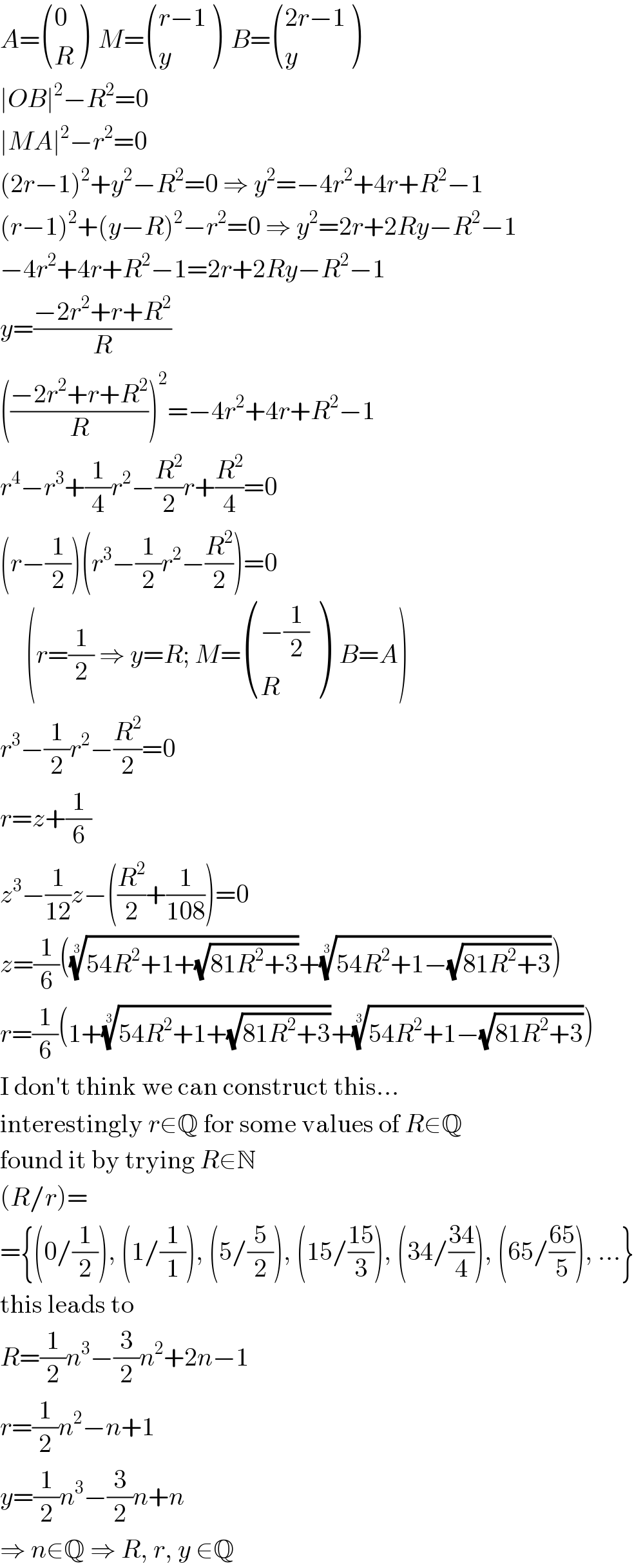
Question and Answers Forum
Question Number 41324 by ajfour last updated on 05/Aug/18

Commented by ajfour last updated on 05/Aug/18

Commented by MJS last updated on 06/Aug/18

Answered by tanmay.chaudhury50@gmail.com last updated on 06/Aug/18

Commented by ajfour last updated on 06/Aug/18

